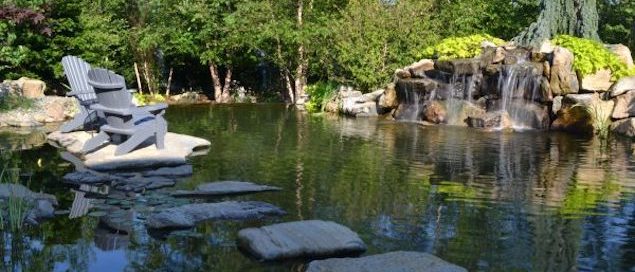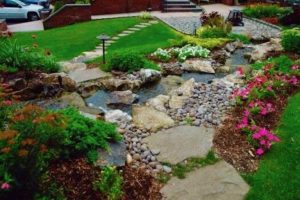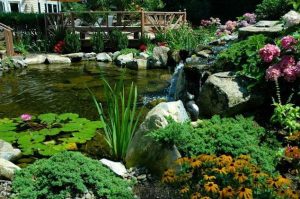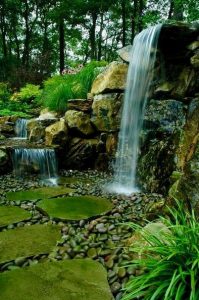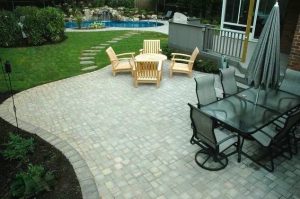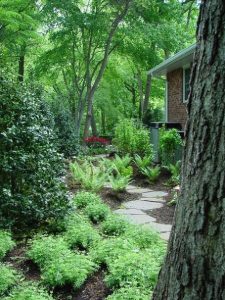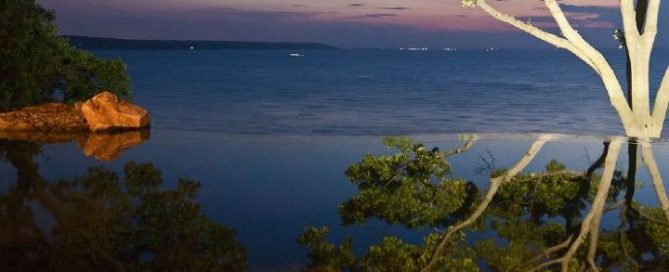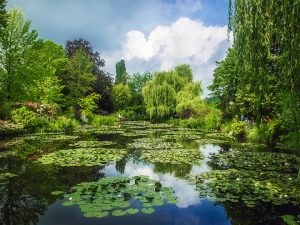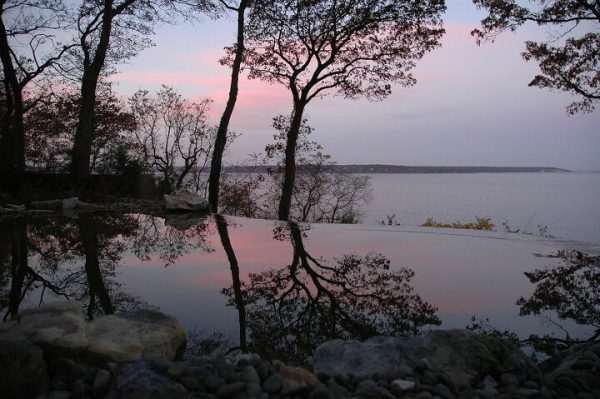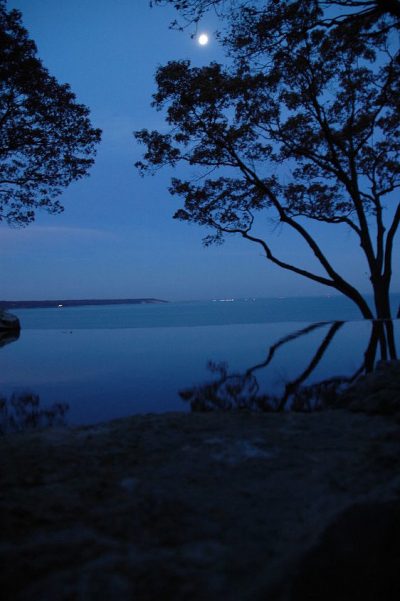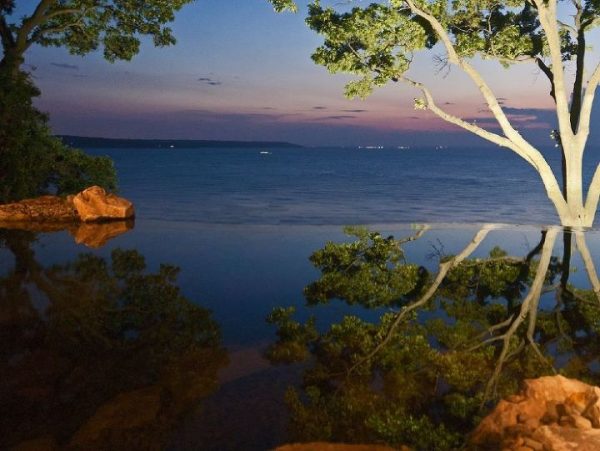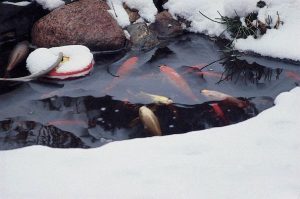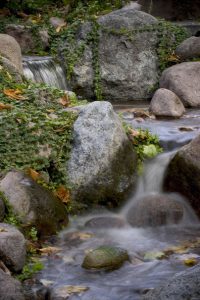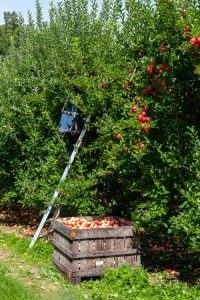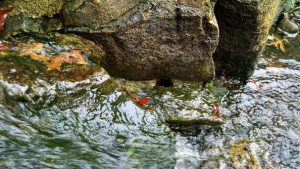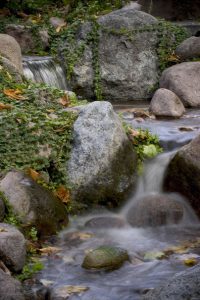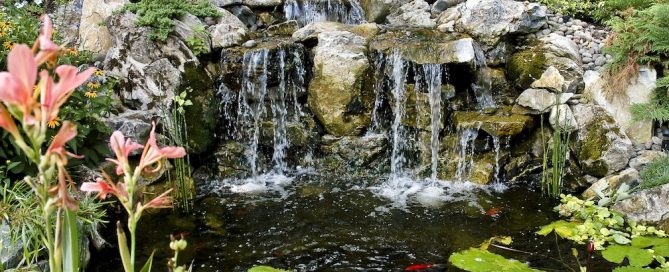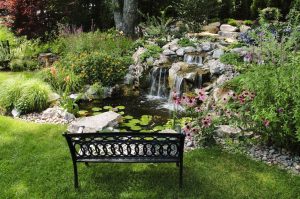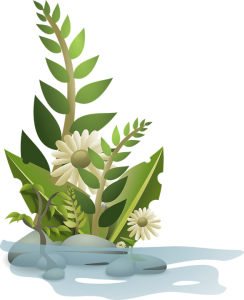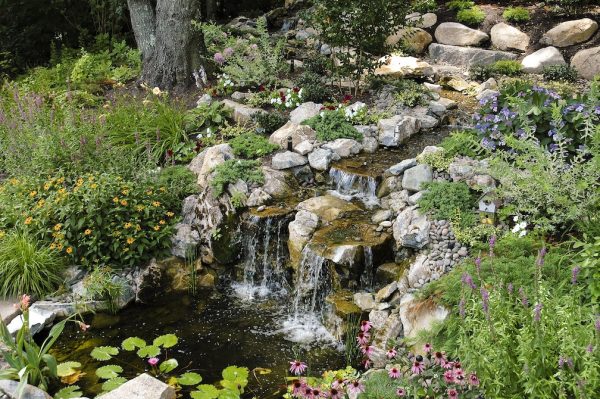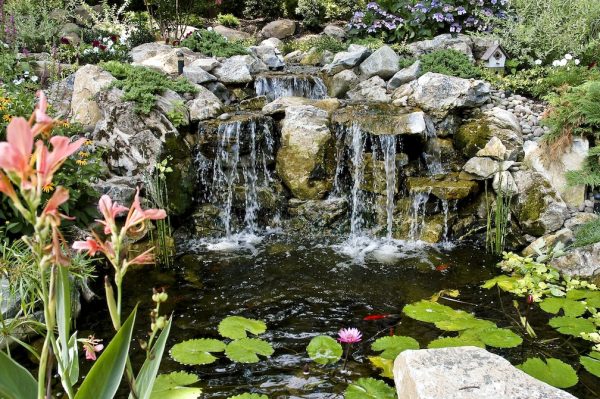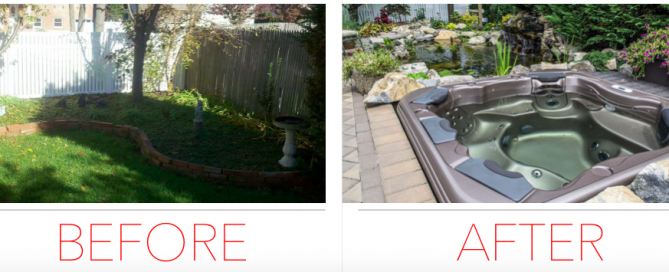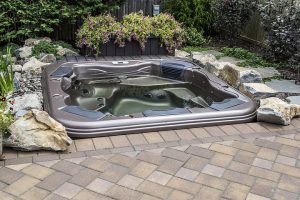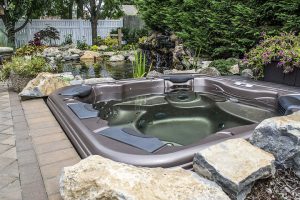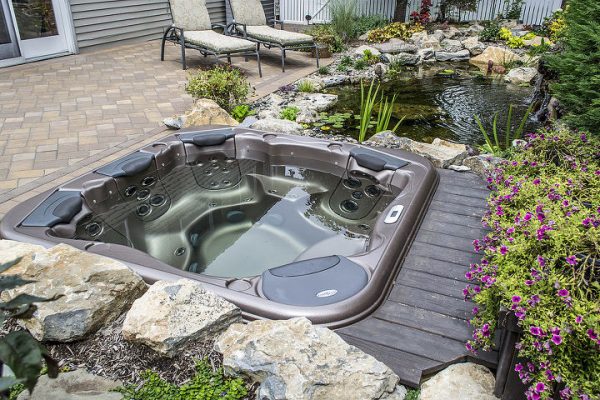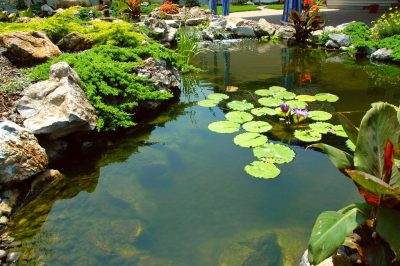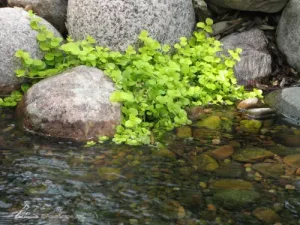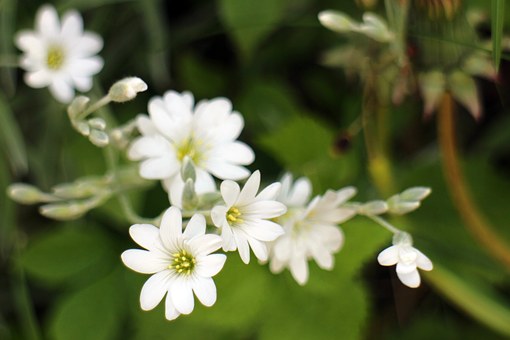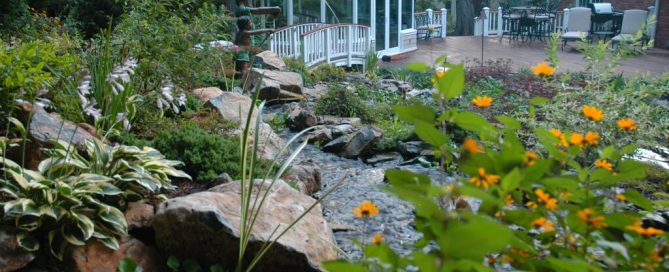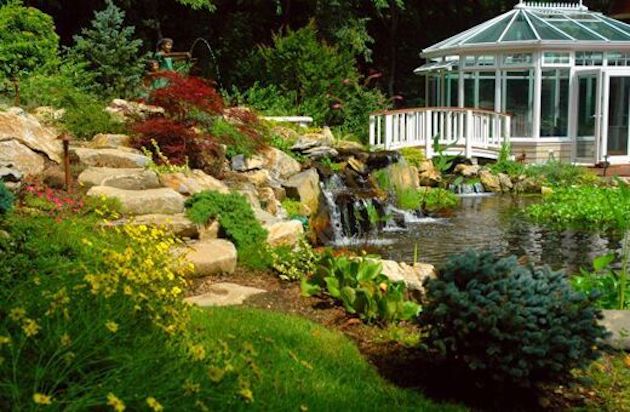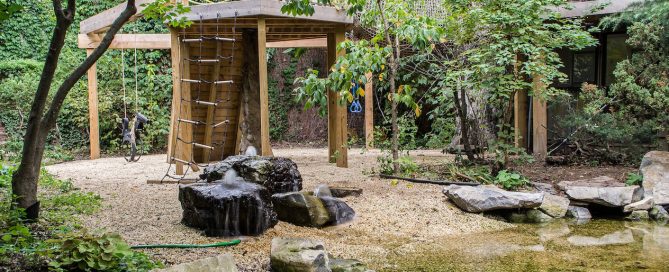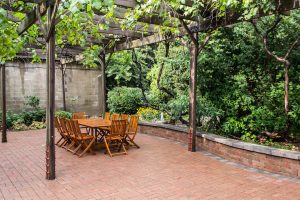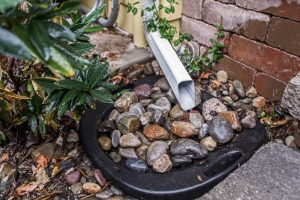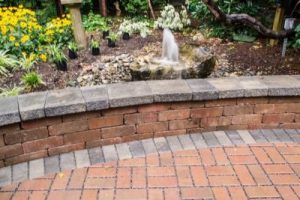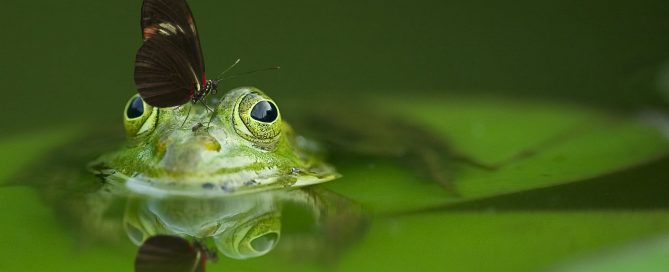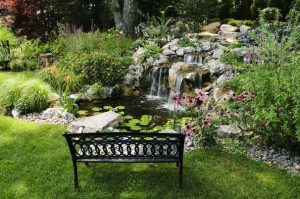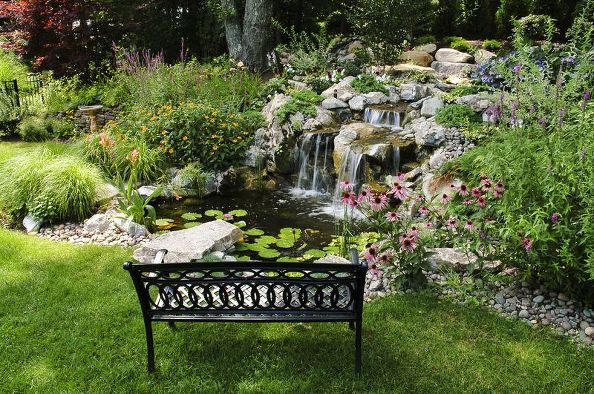Stepping Stone Walkway Ideas
Updated 9-21-23
Stepping stones in areas that get heavy foot traffic are an attractive way to protect the lawn. The stones allow grass, or “softscape,” to shine through while still providing the “hardscape” needed.
However. Is this all that stepping stones can do? “By no means,” says Dave Stockwell, owner of Deck and Patio. “While they are very serviceable, they can also contribute to the serenity of a space. They can be a key element of creating ‘contemplation’ spaces, for example.”
Today our blog is showcasing a sampling of stepping stone paths that we have created for clients — ranging from the very practical to the Zen-like in impact.
Here’s a wonderful example of the standard bluestone stepping stones being put to good use.
These clients wanted a footpath leading to their tool shed — a very practical need. But they had a small backyard. We were already installing extensive multi-level paver patios. So it wasn’t surprising they didn’t want more solid brick hardscape on the opposite side of the pool.
Instead, the bluestone stepping stones we installed allowed for greenery to show through. Along with attractive plantings on either side of the pathway, the journey to their shed offers an uplifting experience that’s not just about the tasks at hand.
Not all stepping stones are flat bluestone slabs, however. The Japanese introduced Zen-garden landscape design centuries ago, inspiring the world to place larger stones as stepping stones across ponds and water feature
“The clients’ desire for a natural-scape in this yard helped inspire us,” says Dave.
First: Deck and Patio installed regular flat bluestone stepping stones leading up to a flowing stream water feature we were doing. Then: Larger natural stones were added to walk across the stream. More flat bluestone was positioned on the other side as a walkway up to the clients’ pool area. Finally, we also added moss rock in various places which adds color and texture.
“Our clients even enjoy it in winter when the moss rock boulders around the stream become sparkling ice sculptures,” adds Dave.
Speaking of larger natural stones, have you ever considered adding a stone “island” in a pond where you can picnic?
When Deck and patio built this lovely water feature, comprising two separate ponds next to each other, there was room in the larger pond (shown here) to add a sizable stone island.
With smooth natural stones leading to it, the homeowners have a true Zen experience walking across the still pond to their own private island.
The clients placed two Adirondack chairs on the island giving them an escape for extended moments of contemplation. Plus, the wide arms of these chairs allow room for a small lunch and cool drink while they listen to birds and watch koi swim. Surrounded by robust bright plantings, including gorgeous aquatic plants, it’s a delightful escape.
A deck can be part of the pond/stepping stone contemplation space, too. This Deck and Patio deck was designed with a viewing platform to enjoy the new pond with waterfalls and beautiful landscaping.
At the bottom of a set of stairs, we placed the first of several large stepping stones leading from the deck, providing a delightful walk across the pond to other viewing areas of the multi-faceted water feature.
So far we’ve explored stepping stones across ponds, one path leading to a utility shed, and below you’ll see stepping stones to a swimming pool.
But here the bluestone stepping stones we added lead past cascading waterfalls, including a dramatic 7’-high waterfall.
“This is a very special experience for the clients,” says Dave. “Usually waterfalls drop into a pond and you can’t walk close to them. But these do not fall into a pond, but pass through river rock into a ‘pondless’ reservoir instead.”
In the underground Aquascape Inc. reservoir, the water is filtered and then recirculated so it operates as a self-sustaining system that remains clean and clear. The different rocks used here include river rock, moss rock, spill rocks and, of course, bluestone stepping stones. They all contribute to a footpath experience one might only hope to get on a mountain trek.
We placed these bluestone stepping stones so they almost skim across the backyard sod. The path connects the clients’ pool patio to a Trex deck and second Cambridge patio located near the house.
This area is also home to a new outdoor kitchen area, complete with barbecue and refrigerator.
How’s this for one last example of the serenity that comes from simply adding bluestone stepping stones.
The stones make a special walking area for the homeowners as they move around their larger backyard retreat.
“While this kind of space is ideal on its own,” says Dave, “the idea came to us when we were looking for a creative way to hide their new swimming pool equipment.
“We decided to create this wilderness area with plantings etc. in a way that offered contemplation moments while at the same time finding a creative way to hide their pool equipment.”

